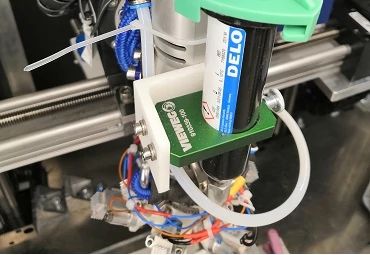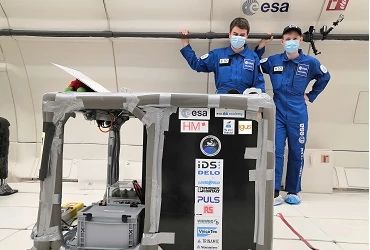Problem
The current process for transporting equipment into outer space is quite inefficient and expensive. This is because the structural parts are primarily designed to withstand the high loads during the launch phase of a spacecraft. However, these structures are oversized for the subsequent operating period. Due to the high costs and limited space on a launch vehicle, alternative solutions are required. The Munich-based student team AIMIS-FYT took on the problem, and is working on a 3D printing process for cost-effective manufacturing in outer space, as part of their aerospace engineering degree programme. To do this, the students rely on photoreactive resin and UV light, which hardens the resin. A 3D printer had to be designed and built for experimental tests of the process in zero gravity.
Solution
The Munich-based company uses the zero gravity in outer space for its 3D printing process. Instead of printing layer by layer, the parts are created in a zero-gravity state using the three-dimensional movement of the print head. The so-called in-situ manufacturing ensures an enormous weight reduction and material savings for the components. For the drive technology of the 3D printer, the young engineers relied on three drylin SAW linear axes of the 1040 range and a robolink gearbox from igus for the movement of the print head. The drylin SAW axes were particularly convincing due to their low weight and freedom from maintenance. To enable the print filament to be rotated as well, a compact robolink D rotary axis with worm gear was installed in the printer. To ensure that the cables at the printer are also safely protected, an easychain is used. "The e-chain expert from igus helped us choose the right chain. Here we had to enter all the parameters of our application and directly received a practical overview of all possible energy chains as well as their service life in our application."


